Related Research Articles

Tallinn is the capital and most populous city of Estonia. Situated on a bay in north Estonia, on the shore of the Gulf of Finland of the Baltic Sea, Tallinn has a population of about 454,000 and administratively lies in the Harju maakond (county). Tallinn is the main financial, industrial, and cultural centre of Estonia. It is located 187 km (116 mi) northwest of the country's second largest city, Tartu, however only 80 km (50 mi) south of Helsinki, Finland, also 320 km (200 mi) west of Saint Petersburg, Russia, 300 km (190 mi) north of Riga, Latvia, and 380 km (240 mi) east of Stockholm, Sweden. From the 13th century until the first half of the 20th century, Tallinn was known in most of the world by variants of its other historical name Reval.

The Estonian Centre Party is a populist political party in Estonia. It was founded in 1991 as a direct successor of the Popular Front of Estonia, and it is currently led by Mihhail Kõlvart.
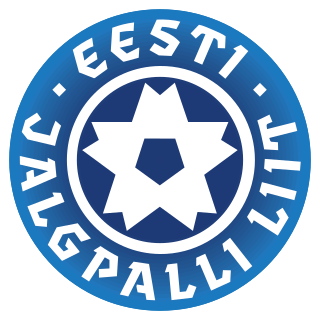
The Estonia men's national football team represents Estonia in international football matches and is controlled by the Estonian Football Association, the governing body for football in Estonia. Estonia's home ground is Lilleküla Stadium in the capital city Tallinn.

Konstantin Päts was an Estonian statesman and the country's president in 1938–1940. Päts was one of the most influential politicians of the independent democratic Republic of Estonia, and during the two decades prior to World War II he also served five times as the country's prime minister. After the 16–17 June 1940 Soviet invasion and occupation of Estonia, President Päts remained formally in office for over a month, until he was forced to resign, imprisoned by the new Stalinist regime, and deported to the USSR, where he died in 1956.

Anija Parish is a rural municipality in the eastern part of Harju County, Estonia.

Estonia–Russia relations are the bilateral foreign relations between Estonia and Russia. Diplomatic relations between the two countries were established on 2 February 1920.
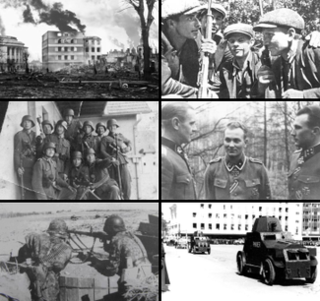
Estonia declared neutrality at the outbreak of World War II (1939–1945), but the country was repeatedly contested, invaded and occupied, first by the Stalinist Soviet Union in 1940, then by Nazi Germany in 1941, and ultimately reinvaded and reoccupied in 1944 by the Soviet Union.
Estonian literature is literature written in the Estonian language The domination of Estonia after the Northern Crusades, from the 13th century to 1918 by Germany, Sweden, and Russia resulted in few early written literary works in the Estonian language. The oldest records of written Estonian date from the 13th century. Originates Livoniae in Chronicle of Henry of Livonia contains Estonian place names, words and fragments of sentences. The Liber Census Daniae (1241) contains Estonian place and family names. The earliest extant samples of connected Estonian are the so-called Kullamaa prayers dating from 1524 and 1528. The first known printed book is a bilingual German-Estonian translation of the Lutheran catechism by S.Wanradt and J. Koell (1535). For the use of priests an Estonian grammar was printed in German in 1637. The New Testament was translated into southern Estonian in 1686. The two dialects were united by Anton Thor Helle in a form based on northern Estonian. Writings in Estonian became more significant in the 19th century during the Estophile Enlightenment Period (1750–1840).

Tartu Ülikooli korvpallimeeskond, also known as Tartu Ülikool Maks & Moorits for sponsorship reasons, is a professional basketball team based in Tartu, Estonia. They are a part of the University of Tartu Academic Sports Club. The team plays in the Estonian-Latvian Basketball League and the Korvpalli Meistriliiga (KML). Their home arena is the University of Tartu Sports Hall.

The following is an alphabetical list of articles related to the Republic of Estonia.
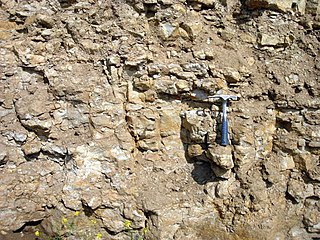
There are two kinds of oil shale in Estonia, both of which are sedimentary rocks laid down during the Ordovician geologic period. Graptolitic argillite is the larger oil shale resource, but, because its organic matter content is relatively low, it is not used industrially. The other is kukersite, which has been mined for more than a hundred years. Kukersite deposits in Estonia account for 1% of global oil shale deposits.

Estonia, officially the Republic of Estonia, is a country by the Baltic Sea in Northern Europe. It is bordered to the north by the Gulf of Finland across from Finland, to the west by the sea across from Sweden, to the south by Latvia, and to the east by Lake Peipus and Russia. The territory of Estonia consists of the mainland, the larger islands of Saaremaa and Hiiumaa, and over 2,200 other islands and islets on the eastern coast of the Baltic Sea, covering a total area of 45,339 square kilometres (17,505 sq mi). The capital city Tallinn and Tartu are the two largest urban areas of the country. The Estonian language is the indigenous and the official language of Estonia; it is the first language of the majority of its population, as well as the world's second most spoken Finnic language.
100 great Estonians of the 20th century is a list of notable Estonians compiled in 1999 by Eesti Entsüklopeediakirjastus, Eesti Päevaleht, National Library of Estonia, Radio Kuku, and TV3.

Ivo Uukkivi is an Estonian stage, film, radio, and television actor, television producer and, under the nickname Munk, founder of and singer with the punk band Velikije Luki.
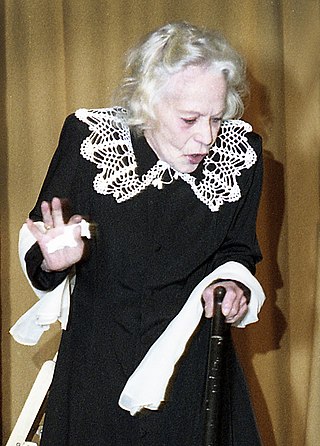
Salme Reek was an Estonian stage, film, radio, and television actress and stage director whose career spanned nearly seventy years; sixty-six of which were spent as an actress at the Estonian Drama Theatre.
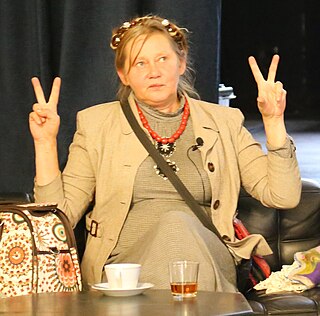
Merle Jääger is an Estonian television, stage and film actress, poet and author who frequently uses the pen name Merca. Initially associated with the burgeoning Estonian punk rock scene of the early to mid 1980s, she has been described as the "bard of protest". Her career as an actress began in her early 20s and she has received a number of high-profile awards for stage roles.
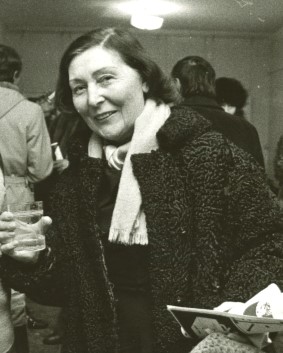
Helmi Üprus was an Estonian architectural and art historian. She trained in romance languages, studied English and ethnography, and earned a master's degree in art history from the University of Tartu in 1936. She worked her way up to head the cultural history department of the Estonian National Museum, where she researched folk art. In 1947, she began working at the Institute of History of the Academy of Sciences of the Estonian SSR. Persecuted by Stalinism she lost her job in 1950 and worked in a factory until Stalin's death. From 1953, she was the chief specialist in architecture and history for the government monument restoration service.
References
- ↑ Hoiualadega jõed Virumaal 2. Narva jõgi
- ↑ Зиновьевы
- 1 2 Материалы к биографическому словарю. Т.I (до 1940 г.) С л о в н и к Составитель – проф. С. Г. Исаков
- ↑ Панков Петр Яковлевич
- ↑ Татарин Альфонс Иванович. Сборник статей Нарвского музея. Нарва, 1999
- ↑ Perekond Dieckhoff
- ↑ Kutseharidus Narvas 1918-1940
- ↑ Andke teada Eesti diplomaatide saatusest, Eesti Päevaleht, 18.03.2006
- 1 2 3 4 Postimees (1886-1944), nr. 45, 16 veebruar 1940
- ↑ О первой школе фигурного катания в Нарве Gazeta.ee,
- ↑ ПОРТАЛ РУССКОЙ ОБЩИНЫ ЭСТОНИИ - КТО ЕСТЬ КТО?: ЧЕТВЕРГОВ ВАЛЕРИЙ
- ↑ Бывшие советские «отцы города» претендуют на пособие, Narvskaja Gazeta, 20.07.2004
- ↑ Владимир Мижуй стал почетным гражданином Нарвы, Viru prospekt, 25.01.2013
- ↑ Narvat juhivad Anatoli Paal ja Raivo Murd, EPL Delfi, 30.10.1996
- ↑ Narva volikogu tagandas linnapea Murdi, Postimees 23.11.1998
- ↑ Narva volikogu tagandas linnapea Eldar Efendijevi, Postimees, 26.10.2000
- ↑ Narva linnapea on Imre Liiv, Õhtuleht 05.12.2000
- ↑ Narva keskerakondlased panid linna juhtima Eduard Easti, Põhjarannik, 13.12.2013
- ↑ Narva linnapea tagandati ametist, Delfi, 26.11.2015
- ↑ Narva uueks linnapeaks valiti Aleksei Jevgrafov Postimees, 08.04.2019
- ↑ Võimupööre Narvas: linnapea tagandati ametist, volikogu esimees astus ise tagasi Põhjarannik, 11.11.2020
- ↑ Narva linnapeaks valiti Katri Raik ERR, 30.12.2020 (vaadatud 30.12.2020)